December 07, 2023
Shenandoah University’s Device Program Standardizes Student Technology
Shenandoah University moved to a universal device model nearly 15 years ago. Here’s how the program has evolved over time to continue to meet the needs of students.
When college campuses around the country shut down in March 2020, IT departments at many schools scrambled to equip students and faculty with devices to help them stay connected and engage in remote learning. But Shenandoah University, a 4,000-student private school in Winchester, Va., was ready.

Don Silvius, Senior iMLearning Support Specialist, Shenandoah University
The university debuted its iMLearning program, which deploys Apple devices to students and faculty, in 2009. Back then, each student received a MacBook Pro and either an iPhone or an iPod Touch. Today, each student receives a MacBook Air, an iPad and an Apple Pencil. In addition to supplying students with the latest devices, Shenandoah has constantly evolved its infrastructure, management and support to make sure its device program is facilitating student success and cultivating a world-class campus experience. With help from CDW, the university is able to get devices to students efficiently with minimal effort from the IT staff.
“That first day, we had students lined up out the door. They were so excited to get their hands on the devices,” recalls Don Silvius, senior iMLearning support specialist in Shenandoah’s Office of Information Technology. “Over time, what we’ve seen is that the program really levels the playing field for our students.
“Before we started iMLearning, a student might come in with an older sibling’s 10-year-old laptop,” he adds. “With a standardized device program, everyone has access to the same technology. We don’t have to worry about students lacking access due to their economic backgrounds. It really makes a difference in their education.”
Laying the Foundation for a Successful Device Program
Although Shenandoah has had a campuswide wireless network since 1997, IT leaders realized that the school would need to greatly expand its Wi-Fi infrastructure to accommodate the influx of new devices. “Pretty much every year, we’ve made some changes to the Wi-Fi network,” Silvius says. “We increased the number of access points tremendously in that first year, and that really saved us.”
Before the program launched, Silvius attended tech conferences and visited other schools to learn best practices for launching and supporting a one-to-one device initiative. Shenandoah saw almost immediate benefits from the device program: The university’s enrollment increased by more than 25 percent after the launch of iMLearning.
Greg Henderson, regional sales manager for the Mid-Atlantic higher education team at CDW, notes that many colleges and universities have closed in recent years. And many leaders in higher education are anxious about the challenges of the coming 2025 “enrollment cliff,” when demographic changes are expected to cause an enrollment dip of 15 percent or more. Henderson says that a well-run device program can help institutions compete for incoming students.
“It’s very important for colleges and universities to make themselves unique,” he says. “Making sure that students have access to the right devices and the right support for those devices is essential.”
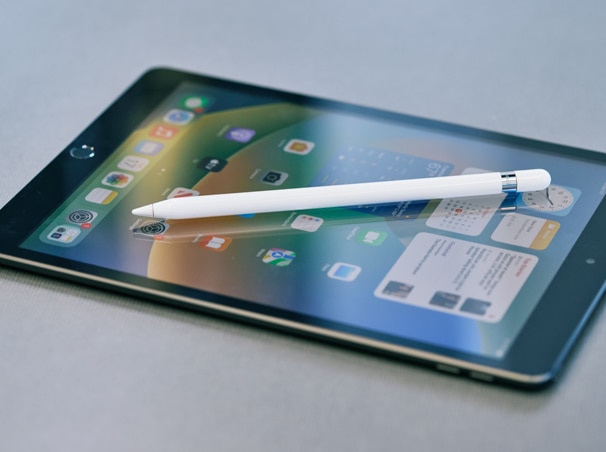
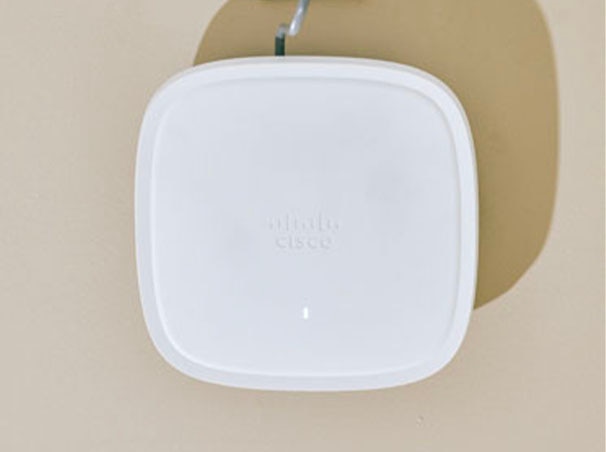
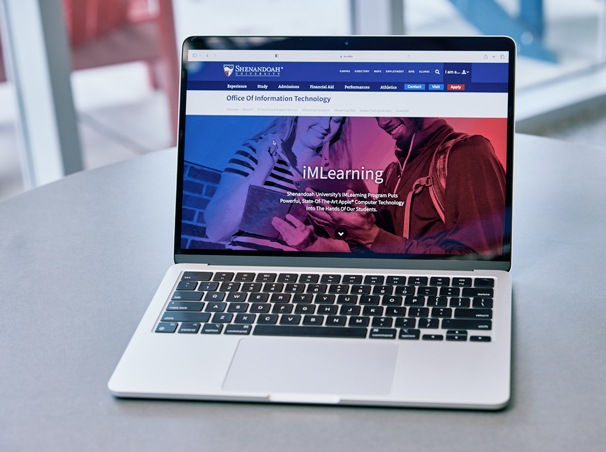
Driving Device Adoption
The iMLearning program is funded through student technology fees, and students get to keep their devices after they graduate. Henderson, who visited campus for a recent device rollout, says that many parents are thrilled that they don’t need to worry about deciding which devices to buy for their children.
But for some faculty members, Silvius says, the transition wasn’t easy.
“I went to a conference in the very beginning with three faculty members, and an English professor said during one of the sessions that he didn’t see how this was going to benefit his students,” Silvius recalls.
While Silvius says that there are still a handful of instructors who ask their students to keep their devices in their backpacks, the majority now eagerly incorporate the technology into their lessons. Because students are all using the same devices, instructors know exactly what digital tools students have at their disposal, and they can create projects that make use of software programs such as iMovie.
Nearly a decade and a half after the debut of iMLearning, Silvius continues to see devices used in new and unexpected ways. Shenandoah has a renowned musical theater program, and at a recent show, Silvius noticed the student sound engineers adjusting audio levels on their iPads. “The cool part is, I helped make that happen,” he says.
The iPad had not yet launched when iMLearning was created. And learning apps, which hardly existed 14 years ago, have since boomed.
Throughout all of these changes to hardware and software, IT leaders, instructors and even students have reinvented how devices are used on campus.
Silvius taught an undergraduate class while he was earning his master’s degree from Shenandoah, and his students suggested that he adopt Notability, a note-taking app for the iPad that syncs handwritten notes with lecture recordings. “I was learning from the students,” he says.
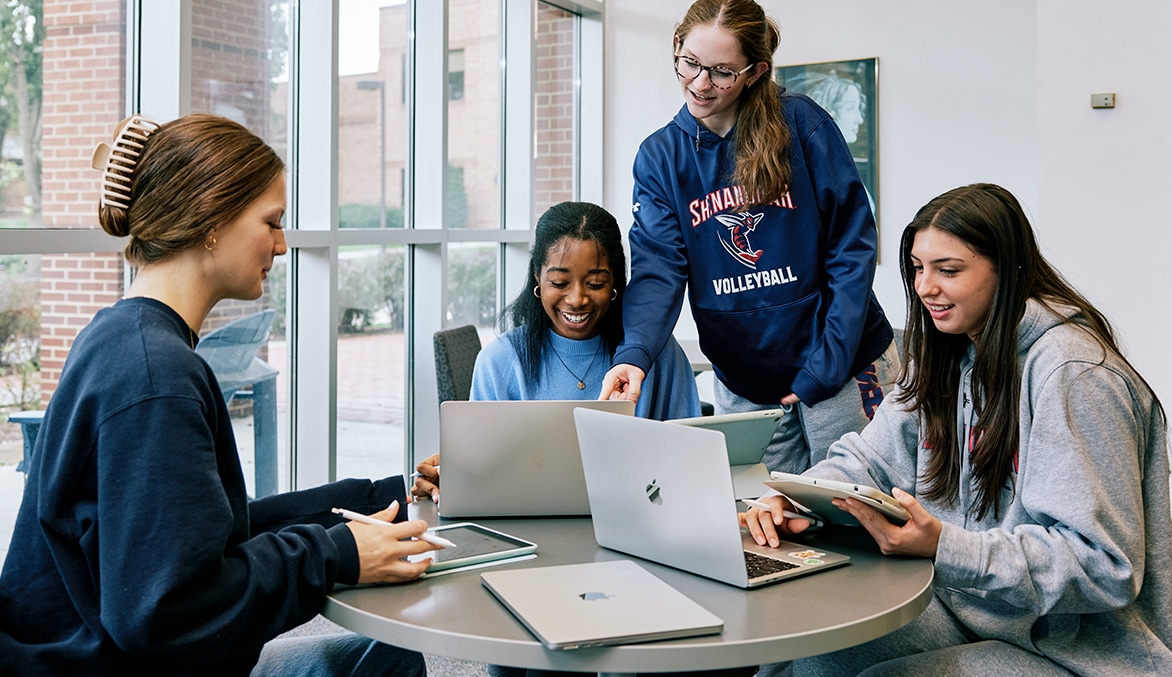
Streamlining Management and Support
One happy result of moving to a standardized device model is that help desk support is simplified, allowing IT staffers to develop deep expertise on a single platform rather than trying to solve problems for myriad device types and operating systems. In fact, many troubleshooting issues never even make it to the help desk, since students using compatible devices are able to help one another solve problems as they arise.
“The biggest eye-opener for me was how helpful students were with each other,” Silvius says. “Over time, that has become an important part of the campus culture.”
When iMLearning first launched, IT leaders monitored the student devices by tracking them on Shenandoah’s Wi-Fi network, but it eventually became clear that the school needed a dedicated mobile management platform. The school adopted Jamf, which allows the IT department to push out operating system updates, lock down stolen student devices, enforce security policies and provision user accounts.
Students also receive access to a full suite of wraparound services that help them make the most of their MacBooks and iPads. The school’s technology fee covers custom applications, 24/7 wireless access, hardware and software support, anti-virus software, four years of AppleCare, and access to Microsoft 365.
How College Students Use Devices
A recent Learning Innovation study of device use among college students shows widespread access. However, a number of hurdles stand in the way of universal adoption.
Nearly all students have access to at least one device. Ninety-three percent of higher education students have access to smartphones, and the same number have access to laptops. However, most don’t use their phones to study. Eighty-four percent of students say they use a laptop to study, but just 42 percent use their smartphones for school.
Many students would like to use more devices in their education. A much smaller number have access to tablets (67 percent). More than 1 in 5 students (22 percent) say that they have interest in using a tablet to study but don’t have access to one. Smaller numbers say the same about desktop computers (16 percent), smart TVs (15 percent) and laptops (11 percent).
Lack of study materials leads all hurdles. More than half of students say that they face at least one obstacle that prevents them from using their devices to study, but no hurdle is cited by more than 1 in 5 students. The most common are a lack of available study materials on their devices (19 percent), incompatibility with course software (16 percent), accessibility limitations (11 percent) and connectivity limitations (9 percent).
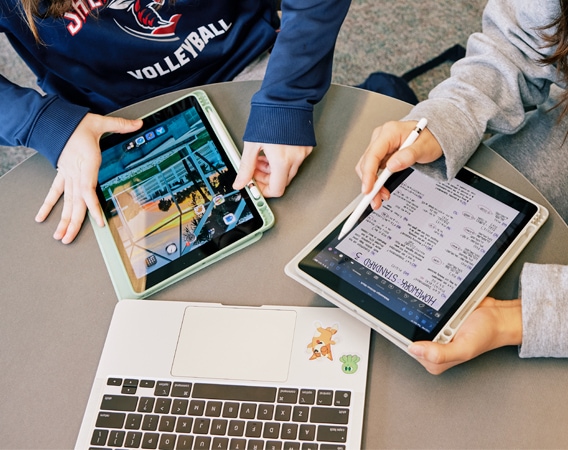
The Importance of Continuous Improvement
Although Shenandoah students already had their devices in the spring of 2020, the university relied on CDW to ship devices to students’ homes the following fall. CDW not only delivered the devices but also configured, provisioned and tagged them so that students could connect to Shenandoah resources as soon as they logged on.
“It worked great,” Silvius says. “I can’t imagine how we would have done it without CDW.”
Since then, Shenandoah has continued to rely on CDW to prepare student devices for deployment, a process that previously presented a significant burden for internal staffers. “Before, we had four people working for a week to get devices ready,” Silvius says. “With CDW taking care of that, we can turn our attention to other parts of the program.”
Henderson notes that CDW’s purchasing power helps ensure that Shenandoah has enough devices for all incoming students, even though enrollment numbers can fluctuate wildly in the weeks before school starts each fall. “This year, we set aside 1,000 of each device, but they only ended up needing 785,” Henderson says. “We can hold up more than 200 machines and not bill them. I don’t know anyone else that can do that.”
Although the iMLearning program continues to evolve, Shenandoah has come a long way since 2009. “When we started, we were clueless,” Silvius says. “Today, people come to us to ask questions.”
Story By Calvin Hennick, a freelance journalist who specializes in business and technology writing. He is a contributor to the CDW family of technology magazines.
Photography by Eli Meir Kaplan
